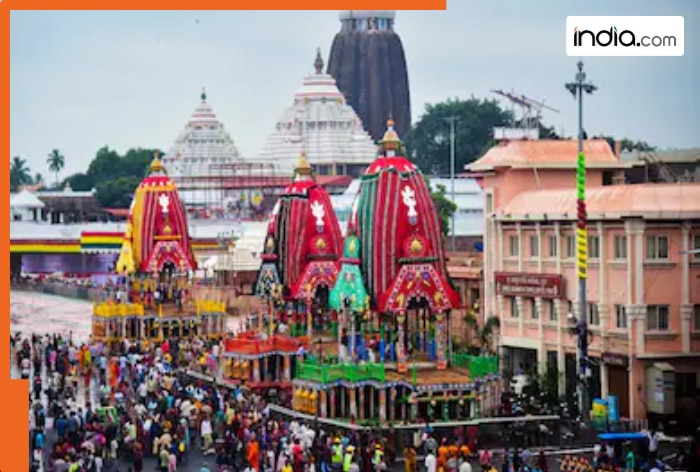Jagannath Rath Yatra 2025: One of India’s most revered and visually grand festivals Jagannath Rath Yatra which is also known as Shree Gundicha Yatra or the Chariot Festival is being celebrated today June 27 in Puri Odisha. This festival is dedicated to Lord Jagannath a form of Lord Vishnu. This ancient tradition blends mysticism devotion and royal pageantry into an awe-inspiring spiritual journey.
And today let’s uncover some fascinating facts about this age-old and spiritually rich tradition.
Three primary deities
Lord Jagannath his brother Balabhadra and his sister Subhadra. Each rides in their own colossal wooden chariot—constructed afresh each year using specific trees like phassi and dhausa. The designs are strictly traditional and remain unchanged for centuries. The chariots are named:
1. Nandighosa (Jagannath – 18 wheels)
2. Taladhwaja (Balabhadra – 16 wheels)
3. Darpadalana (Subhadra – 14 wheels)
The Deities leave their templeOnce a year the idols leave the Jagannath Temple and travel to the Gundicha Temple—symbolizing a rare moment when the divine steps out to meet the public.
New chariots are built every yearEach year brand-new chariots are made using sacred wood like phassi and dhausa. The design and structure remain exactly the same down to their divine guardians—Garuda Vasudeva and Jayadurga.
Chariots have names and unique features
Jagannath rides Nandighosa with 18 wheels
Balabhadra rides Taladhwaja with 16 wheels
Subhadra rides Darpadalana with 14 wheelsAll are decorated with vibrant canopies and pulled by devotees.
Temple entry restrictions lifted during yatraNon-Hindus and foreigners are not allowed inside the temple but during Rath Yatra everyone can see and even touch the deities—a gesture of divine inclusiveness.
King becomes a servant for the lordThe Gajapati King of Puri performs the Chhera Pahanra ritual sweeping the chariot floor with a golden broom to show that even kings bow before the divine.
The Deities ‘Fall Ill’ before the festivalFifteen days before the Yatra the deities are symbolically believed to fall sick after a ceremonial bath of 108 pots of water and rest during a phase called Anasara.
The main temple gate remains closedDuring this rest period the main entrance of Jagannath Temple the Singhadwara stays shut signifying the deities’ absence from their home.
Jagannaths chariot doesn’t move easilyDevotees believe Lord Jagannath doesn’t move immediately when the Yatra begins—symbolising that divine will cannot be forced even by hundreds pushing and pulling.
The divine marital dispute: Hera PanchamiOn the fifth day of the Yatra Goddess Mahalaxmi upset with Jagannath for leaving without her visits Gundicha Temple to symbolically demand his return.
